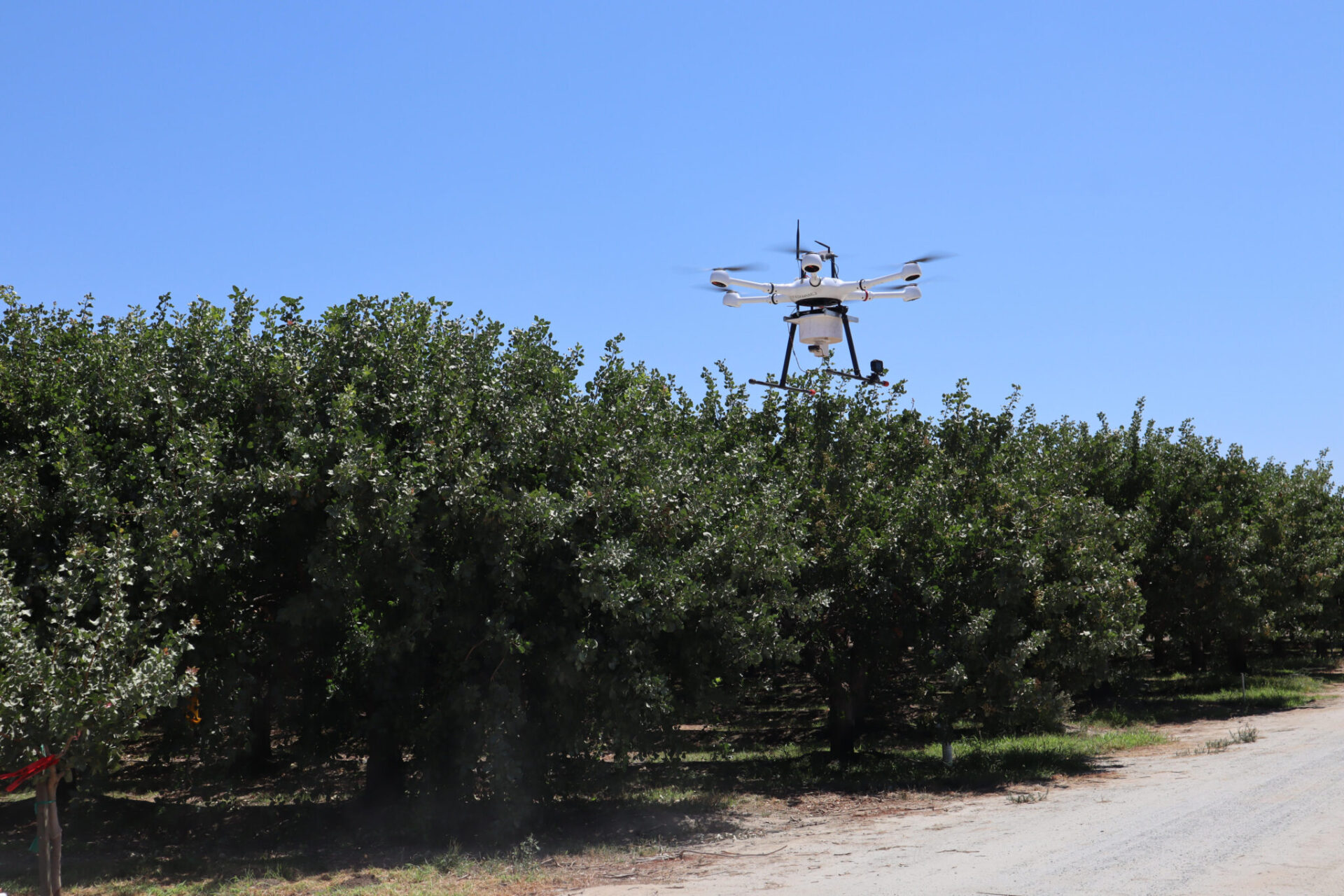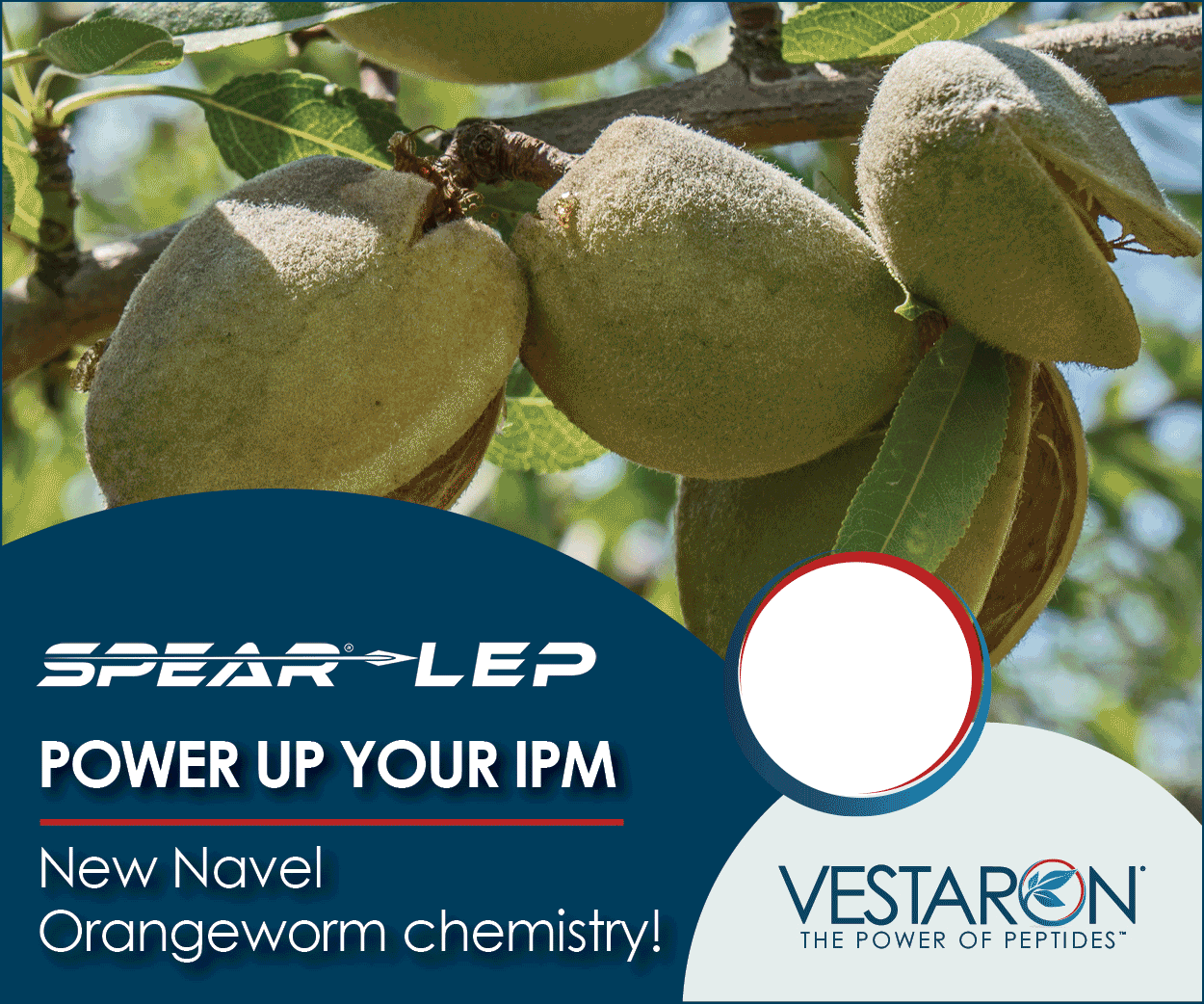
Progress continues in the development of a ‘competitive’ sterile navel orangeworm (NOW) moth that can successfully locate and mate with wild NOW when released in pistachio and almond orchards. Referred to as the sterile insect technique (SIT), this pest control strategy utilizes strategic release of large numbers of sterile NOW to effectively reduce populations of wild NOW. When a sterile NOW mates with a wild NOW, the wild NOW is no longer able to produce viable offspring, which over time results in lower populations and, ultimately, less crop damage.
The NOW SIT Program, now entering its fourth year, has been focused on control of navel orangeworm using SIT as part of a broader area-wide integrated pest management strategy. The SIT program involves mass production of NOW at a USDA facility in Phoenix, Ariz. where they are sterilized with radiation and then shipped out to California for release into pistachio and almond orchards.
Over the past three years, Houston Wilson, a UCCE Specialist (Dept. Entomology, UC Riverside) based at the Kearney Ag Center, and USDA Research Entomologist Chuck Burks have been working on SIT with funding from the pistachio and almond industries. Wilson presented an update on the NOW SIT Program for the 2021 Statewide Pistachio Day.
Improvement of the mass rearing process, moth collection and cold storage, transport, release and irradiation methods are all in sight for 2021. Wilson said he also plans to work with collaborators to determine what an operational SIT program might look like in terms of total release areas, frequency of release, transport methods and costs.
In the past year, research by Wilson and Burks demonstrated that the standard mass-rearing, transport and release processes all seem to have some negative influence on performance of the sterile NOW – but by modifying these methods, the performance of the sterile moths can be improved.
Research plans for this year include isolating key variables in the mass production process at the Phoenix facility. Wilson noted that current practices used in the mass rearing process may be responsible for shorter NOW flying times compared to wild moths. He also plans some ecological and economic scenario modeling to understand the potential costs and infrastructure requirements of different approaches to SIT in California as well as prioritize acreage for release of sterile moths. Field studies will identify environmental factors that influence sterile moth recovery and activity rates, and laboratory assays will begin to evaluate alternative methods of sterilization that utilize X-rays.
Ultimately, field trials will be needed to determine approximately how many sterile NOW per acre are needed to effectively reduce crop damage, although these can’t begin until the mass-rearing, transport and release processes have been further refined.
“While we’re making progress in the development of a competitive sterile moth, we’re also developing a long-term road map for the potential implementation of SIT at scale,” Wilson said.
















